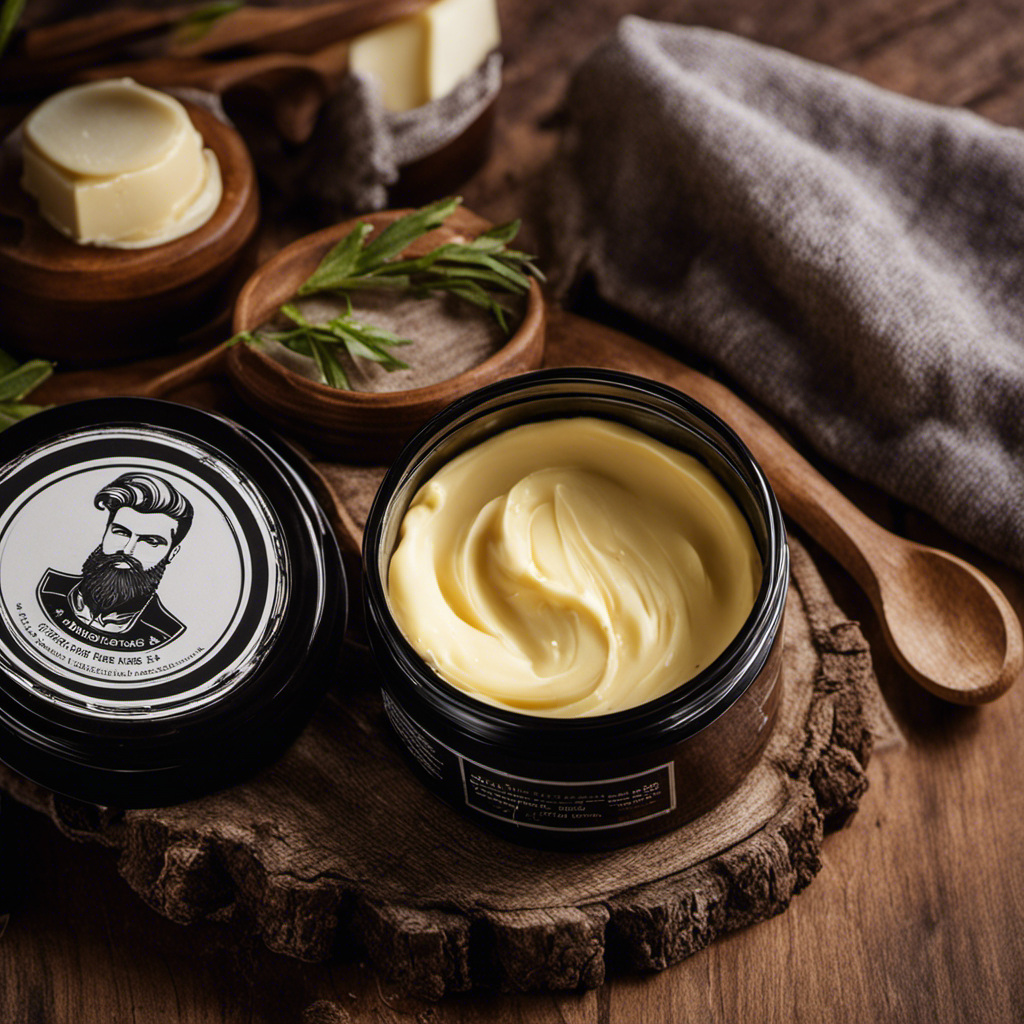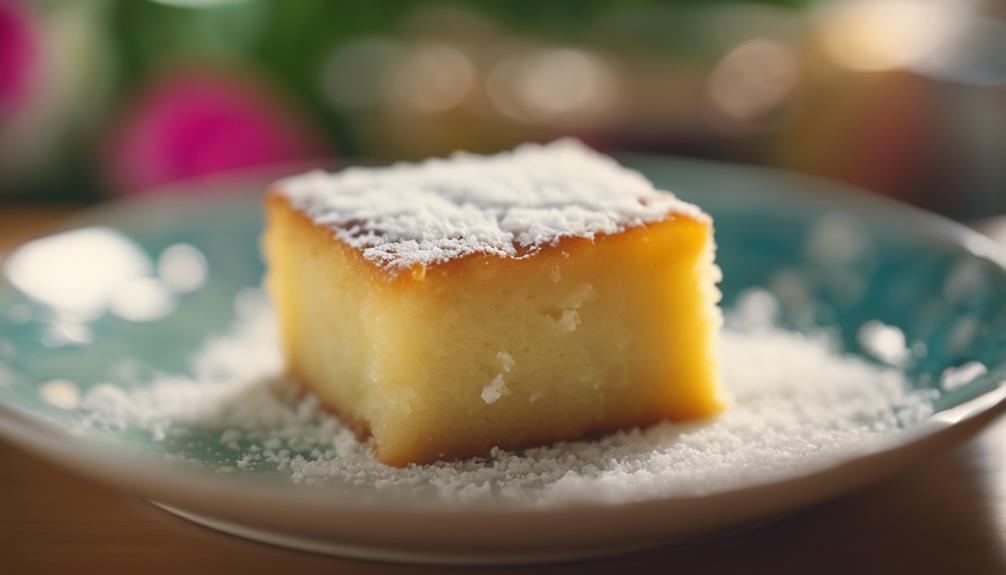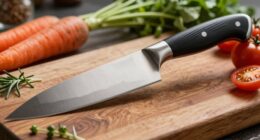I have always thought that a well-maintained beard is a sign of confidence and uniqueness. Just like a sculptor working with clay, achieving the ideal beard requires the correct tools and products.
In this article, I’ll guide you through the process of making your very own beard butter. From selecting the finest ingredients to pouring and cooling the final product, I’ll share all the steps and tips you need to craft a beard butter that will leave your facial hair soft, healthy, and irresistibly touchable.
Key Takeaways
- High-quality oils and butters, such as jojoba oil, argan oil, shea butter, and cocoa butter, are essential for making beard butter.
- Natural ingredients are preferred over harsh chemicals and additives for a gentle and nourishing beard butter.
- Accurate measurements of ingredients are crucial for achieving a well-balanced and effective beard butter.
- Experimenting with different oils and essential oils allows for customization of scent and added benefits in the beard butter.
Choosing the Right Ingredients
When choosing the right ingredients for your beard butter, you’ll want to ensure you’re using high-quality oils and butters. The benefits of natural ingredients cannot be overstated.
Natural oils like jojoba oil and argan oil are fantastic choices for beard butter because they are lightweight and easily absorbed by the skin and hair. These oils provide nourishment, hydration, and promote hair growth.
Shea butter and cocoa butter are excellent options for adding moisture and softness to your beard. They also help to reduce itchiness and dryness.
Natural ingredients are free from harsh chemicals and additives, which means they are gentle on your skin and beard.
Essential Tools for Making Beard Butter
To create your own beard butter, you’ll need a few essential tools. First, you’ll need a double boiler or a heat-resistant bowl and a saucepan. This will be used to melt and combine the ingredients.
Next, you’ll need a whisk or a hand mixer to ensure a smooth and creamy consistency. A small spatula or spoon will come in handy for scraping out the final product.
Additionally, you’ll need small jars or containers for proper storage. Choosing the right oils is crucial for a high-quality beard butter. Look for oils like jojoba, argan, and almond oil, as they provide moisturizing and nourishing properties.
Proper storage methods include keeping the beard butter in a cool, dry place away from direct sunlight to preserve its shelf life.
Now that you have the essential tools and knowledge about oils and storage, we can move on to preparing and measuring the ingredients.
Preparing and Measuring the Ingredients
When it comes to preparing and measuring ingredients for a recipe, understanding ingredient quantities is essential.
In this discussion, I will explain how ingredient quantities are determined and why they are important in achieving the desired outcome of a dish.
Additionally, I will cover the various measuring tools and techniques that can be used to ensure accurate measurements, as precision is key in cooking and baking.
Ingredient Quantities Explained
You’ll need to carefully measure and adjust the quantities of each ingredient to ensure the perfect consistency and nourishing qualities for your beard butter. Understanding ingredient ratios is key to creating a high-quality product. The table below will help you understand the ideal ratios for different ingredients:
| Ingredient | Ratio | Purpose |
|---|---|---|
| Carrier oil | 70% | Provides moisture and shine |
| Shea butter | 15% | Adds texture and softness |
| Beeswax | 10% | Provides hold and structure |
| Essential oil | 5% | Adds fragrance |
By customizing the scent, you can create a beard butter that suits your personal preferences. Experiment with different essential oils to find your perfect blend. Some popular choices include cedarwood, sandalwood, and peppermint. Don’t be afraid to mix and match to create a unique scent that is truly yours.
Now that you understand the ingredient ratios and have some ideas for customizing the scent, let’s move on to the next section about measuring tools and techniques.
Measuring Tools and Techniques
Using the right measuring tools and techniques is essential for achieving accurate ingredient quantities in your homemade beard product.
When it comes to measuring techniques, precision is key. Invest in a good set of measuring spoons and cups to ensure accurate measurements.
When measuring dry ingredients, use a straight edge to level off the excess. For liquids, make sure you are eye-level with the measurement lines to avoid any errors.
One common measurement mistake to avoid is guessing or eyeballing the quantities. This can lead to imprecise results and affect the overall quality of your beard product.
Another mistake is using the wrong measuring tools, such as using a tablespoon instead of a teaspoon.
Importance of Accurate Measurements
To ensure the best results for your homemade beard product, it’s important to invest in a good set of measuring tools and techniques. Accurate measurements are crucial when making beard butter, as they determine the final consistency and effectiveness of the product. Using precise measurements ensures that the right amount of each ingredient is used, resulting in a well-balanced and nourishing beard butter. Here are some benefits of using beard butter and different variations of beard butter recipes:
| Benefits of using beard butter | Different variations of beard butter recipes |
|---|---|
| Hydrates and softens the beard | Classic beard butter with shea butter, coconut oil, and essential oils |
| Helps to tame and shape the beard | Citrus-infused beard butter with jojoba oil, beeswax, and orange essential oil |
| Reduces beard itch and dandruff | Woodsy beard butter with cedarwood oil, argan oil, and sandalwood essential oil |
| Promotes healthy beard growth | Minty-fresh beard butter with peppermint oil, almond oil, and eucalyptus essential oil |
| Adds a natural shine to the beard | Spicy beard butter with cinnamon oil, avocado oil, and clove essential oil |
Experiment with different variations to find the beard butter recipe that suits your preferences and needs. Happy bearding!
Melting and Mixing the Base Ingredients
Once the base ingredients are melted and mixed, the beard butter will have a smooth and creamy consistency. This step is crucial in creating a high-quality product that will nourish and hydrate your beard. To achieve the best results, it’s important to use proper mixing techniques and consider alternative ingredients.
Here are three key points to keep in mind:
-
Thoroughly mix the melted base ingredients to ensure a uniform texture throughout the beard butter. This will prevent any clumps or separation when applied to your beard.
-
Experiment with different oils and butters to find the perfect combination for your beard. Some popular alternatives include argan oil, shea butter, and jojoba oil, which offer additional benefits such as increased shine and moisture.
-
Don’t be afraid to get creative with essential oils to add a pleasing scent to your beard butter. Lavender, cedarwood, and peppermint are just a few examples that can provide a refreshing and invigorating aroma.
Adding Fragrance and Essential Oils
When adding fragrance and essential oils, you’ll have the opportunity to customize the scent of your beard product to your liking. Fragrance selection is an important step in creating a unique and appealing beard butter.
There are a plethora of scents to choose from, ranging from citrusy and fresh to woody and spicy. Consider the desired effect you want your beard butter to have on your senses and select a fragrance that complements your personal style.
Mixing techniques are crucial to ensure that the fragrance is evenly distributed throughout the product. One effective technique is to add the fragrance oil to the melted base ingredients and stir thoroughly. Another option is to add the fragrance oil after the butter has cooled slightly, allowing it to incorporate more evenly.
Experiment with different mixing techniques to find the one that works best for you and creates a well-balanced scent in your beard butter.
Pouring and Cooling the Beard Butter
When it comes to pouring and cooling beard butter, there are a couple of key points to keep in mind.
First, the optimal cooling time is crucial to ensure that the butter sets properly and achieves the desired consistency.
Secondly, it is important to follow pouring temperature recommendations to avoid any issues such as separation or graininess in the final product.
In this discussion, I will delve into these two aspects in detail, providing you with all the necessary information to successfully pour and cool your beard butter.
Optimal Cooling Time
After the beard butter has been mixed thoroughly, it’s important to let it cool for the optimal amount of time. This ensures that the butter solidifies properly and maintains its desired texture. The ideal temperature for cooling the beard butter is around 60 to 70 degrees Fahrenheit. Cooling it at this temperature allows the ingredients to blend together perfectly, resulting in a smooth and creamy consistency.
However, if you find that the butter is not setting properly or is too soft, here are some troubleshooting tips:
- Place the container in the refrigerator for a longer period of time.
- Adjust the room temperature by turning on a fan or air conditioning.
- Add a small amount of beeswax to the mixture to help with solidification.
By following these tips, you can troubleshoot any issues and achieve the perfect beard butter consistency.
Now, let’s move on to the next section about pouring temperature recommendations.
Pouring Temperature Recommendations
To achieve the best results, it’s recommended that you pour the mixture into the containers when it reaches a temperature between 120 and 130 degrees Fahrenheit. Proper pouring techniques and temperature control are crucial when making beard butter.
When the mixture is at the ideal temperature, it will have a smooth and creamy consistency, ensuring even distribution of the ingredients. To maintain this temperature range, use a kitchen thermometer to monitor the temperature throughout the process.
Once the mixture reaches the desired temperature, pour it slowly into the containers, making sure to fill them evenly. Be careful not to pour too quickly, as this can cause air bubbles to form. The controlled pouring technique will result in a well-blended and high-quality beard butter that is easy to apply and provides optimal nourishment for your facial hair.
Packaging and Storing the Finished Product
Make sure you store your finished beard butter in a dark, cool place to maintain its freshness and effectiveness. Proper packaging and storage are crucial to preserving the quality and extending the shelf life of your homemade beard butter.
Here are some options and tips to consider:
-
Glass jars: Glass containers are ideal for storing beard butter as they are non-reactive, preventing any chemical leaching or alteration of the product.
-
Tin containers: Tin containers are lightweight and durable, making them a convenient option for travel or on-the-go use.
-
Plastic containers: While plastic containers are affordable and readily available, they may not be the best choice as they can be prone to chemical leaching and may affect the quality of the beard butter over time.
Remember to label your containers with the date of production to keep track of the freshness of your beard butter.
Stored properly, your homemade beard butter can maintain its effectiveness for up to 6 months.
Tips and Tricks for Using Beard Butter
Remember that applying a small amount of beard butter to your facial hair will go a long way in keeping it moisturized and manageable. Beard butter application is a simple yet effective way to improve the health and appearance of your beard.
When applying, ensure that your beard is clean and dry. Scoop a small amount of butter onto your fingertips and rub it between your palms to warm it up. Then, gently massage the butter into your beard, starting from the roots and working your way down to the ends. Make sure to cover the entire beard to evenly distribute the product.
The benefits of using beard butter are numerous. It moisturizes the hair, preventing dryness and itchiness. It also softens the beard, making it easier to style and reducing frizz. In addition, beard butter helps to nourish and strengthen the hair follicles, promoting healthier growth and reducing breakage.
Frequently Asked Questions
How Long Does Homemade Beard Butter Typically Last Before It Expires?
Homemade beard butter typically lasts for about 6-12 months before it expires. To prolong its shelf life, store it in a cool, dry place away from direct sunlight. Avoid introducing water or contaminants to prevent spoilage.
Can I Use Any Type of Fragrance or Essential Oil in My Beard Butter?
Sure, you can use any fragrance or essential oil in your beard butter. Just remember to choose options that are safe for use on the skin. Experiment with different scents to create a personalized experience for your beard.
Is It Necessary to Use Specific Packaging Materials for Storing the Beard Butter?
Using specific packaging materials for storing beard butter is important. It helps maintain the product’s quality and extends its shelf life. Suitable options include amber glass jars or tin containers, which provide protection from light and air, preserving the butter’s properties.
Can I Use a Microwave to Melt the Base Ingredients Instead of a Double Boiler?
Yes, you can use a microwave to melt the base ingredients for beard butter. It’s quicker but can be riskier due to potential overheating. A double boiler provides more control and prevents burning.
Are There Any Ingredients That Should Be Avoided When Making Beard Butter?
When making beard butter, it’s important to avoid certain ingredients that can irritate the skin or damage the beard. Additionally, choosing the right carrier oils is crucial for achieving a nourishing and moisturizing effect.
Conclusion
Well, there you have it, folks! You’re now equipped with all the knowledge to create your very own beard butter. Whether you’re a bearded gentleman looking to tame your unruly facial hair or you’re just curious about the art of beard grooming, this guide has got you covered.
From choosing the right ingredients to packaging and storing the finished product, we’ve covered it all. So go forth, my friends, and let your beards bask in the glory of homemade buttery goodness.
Trust me, your beard will thank you.









